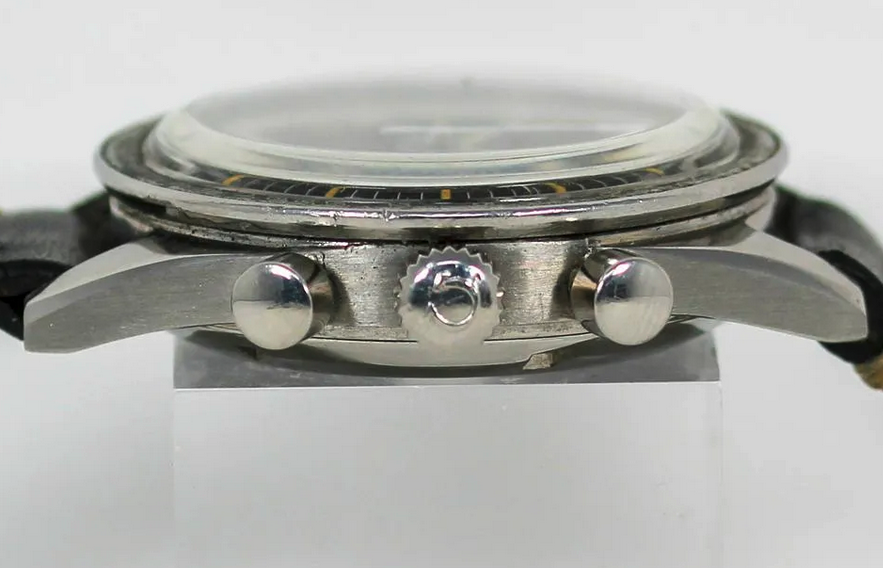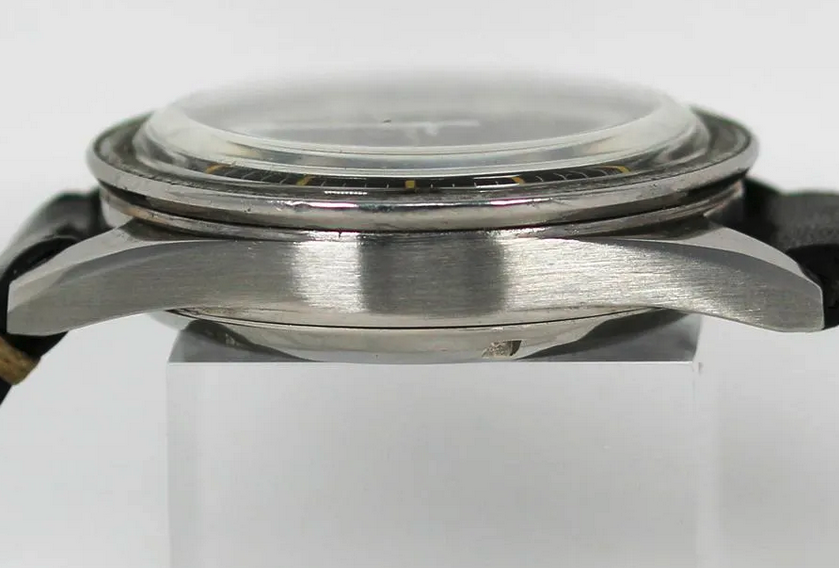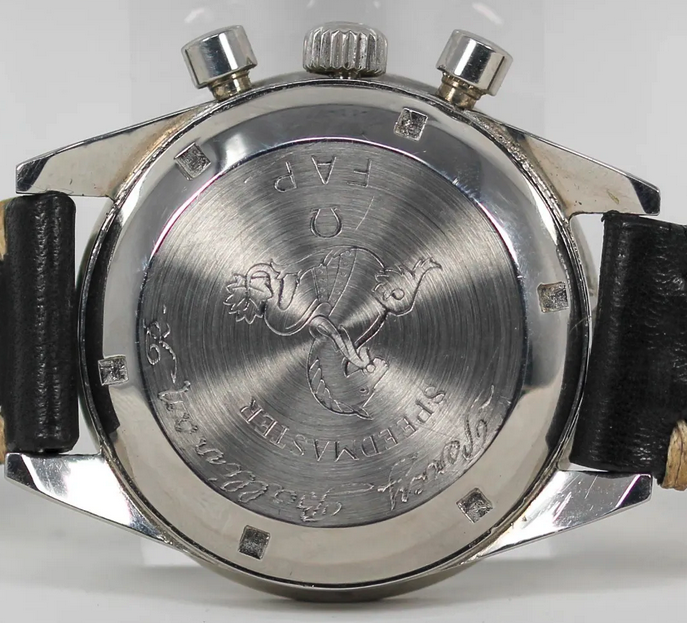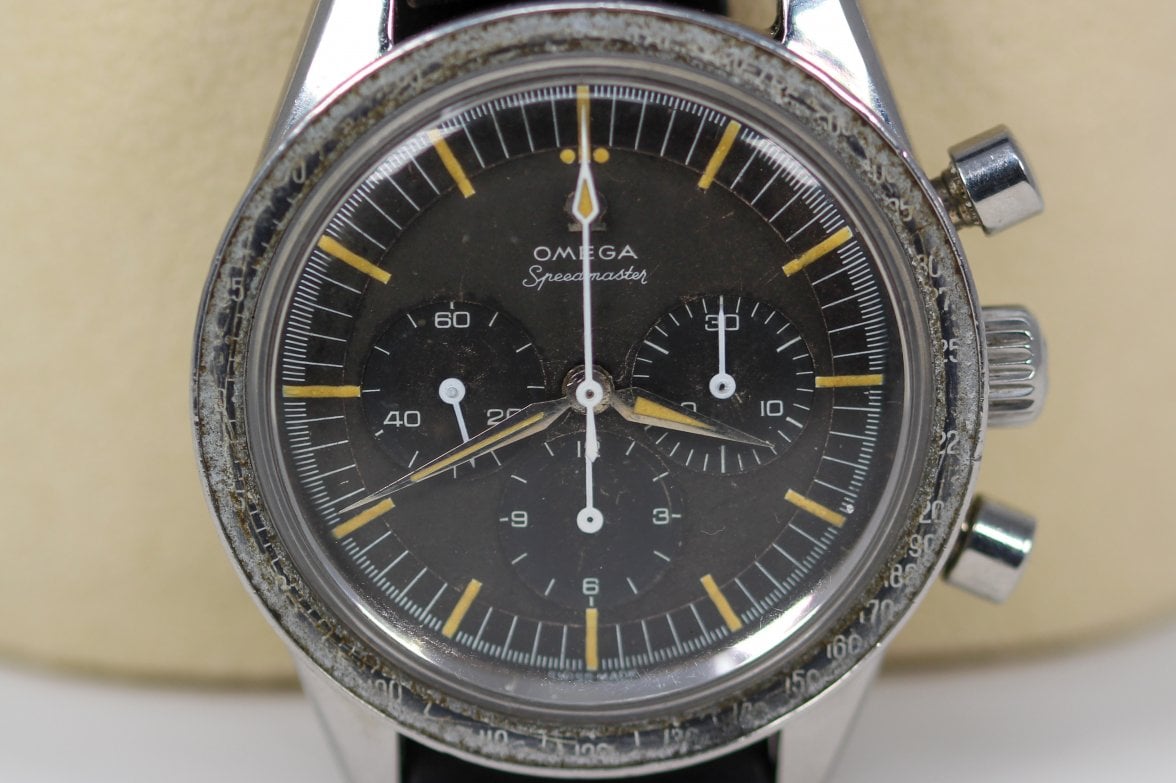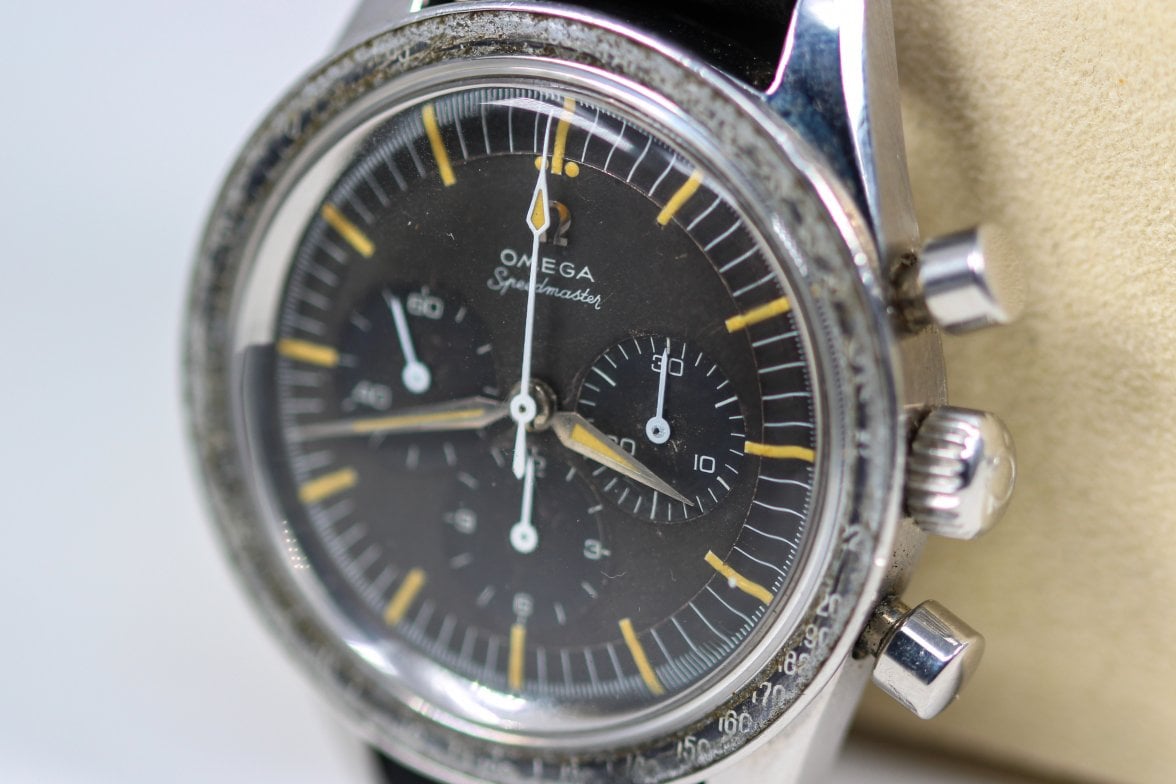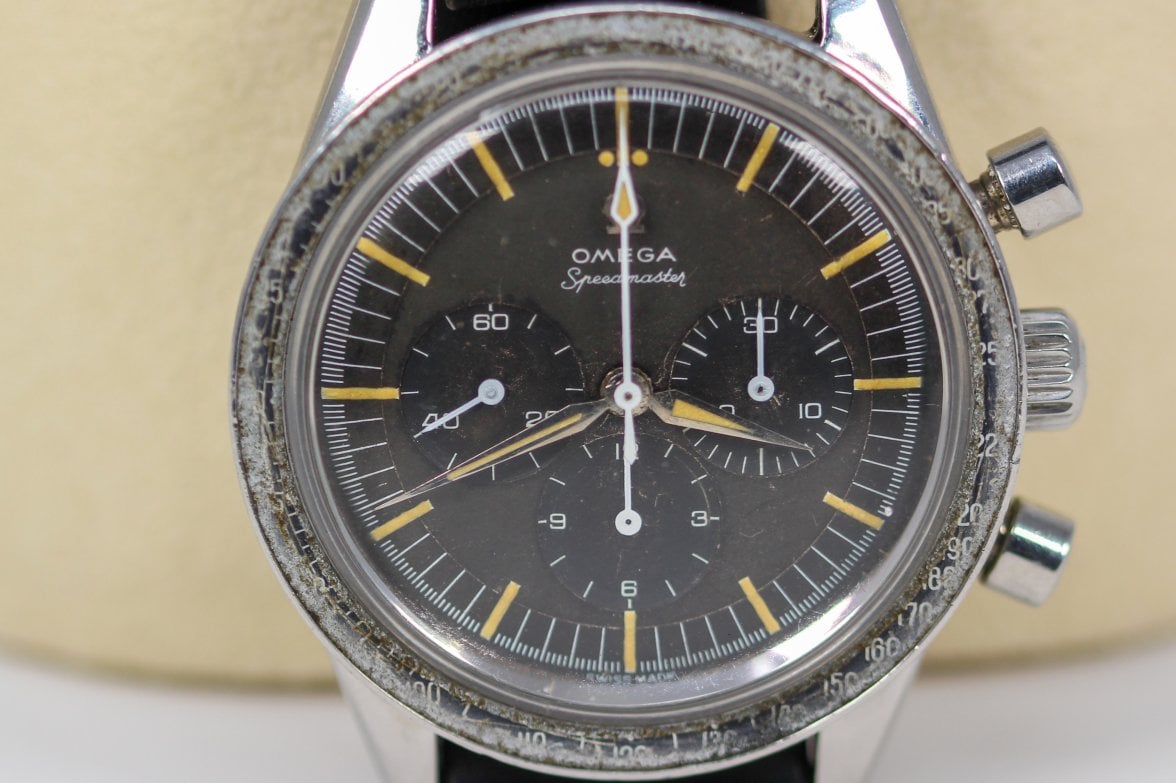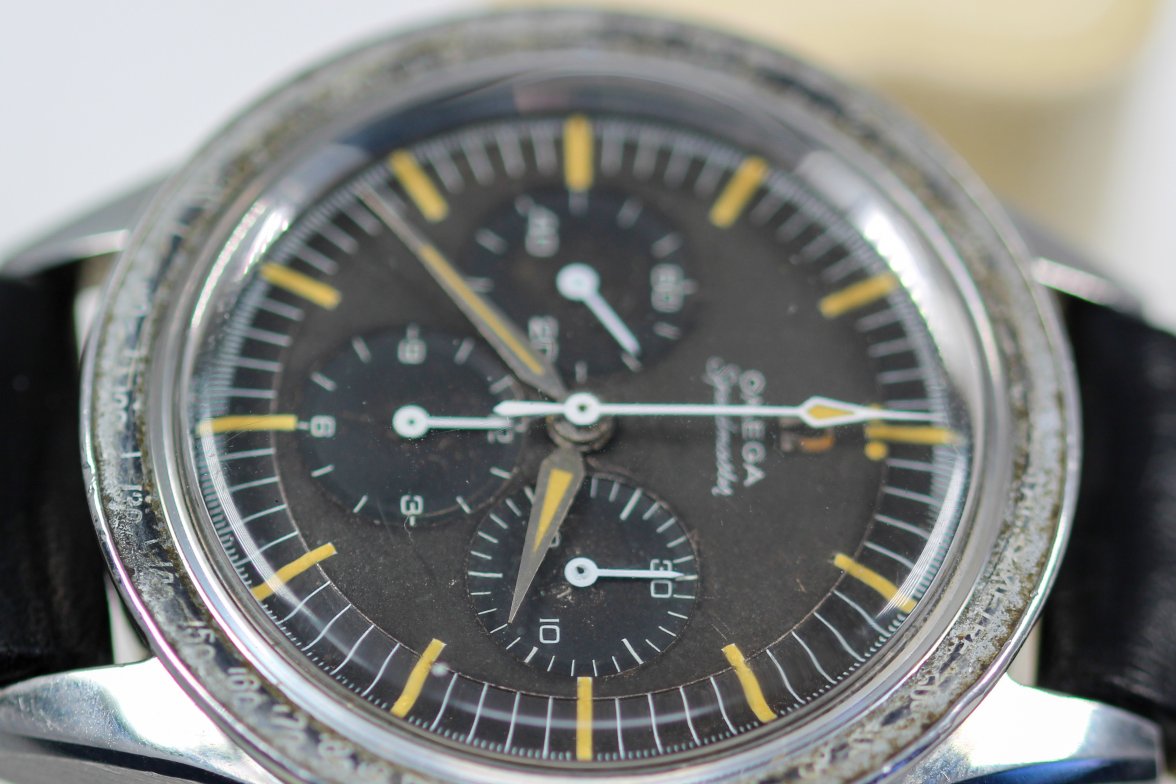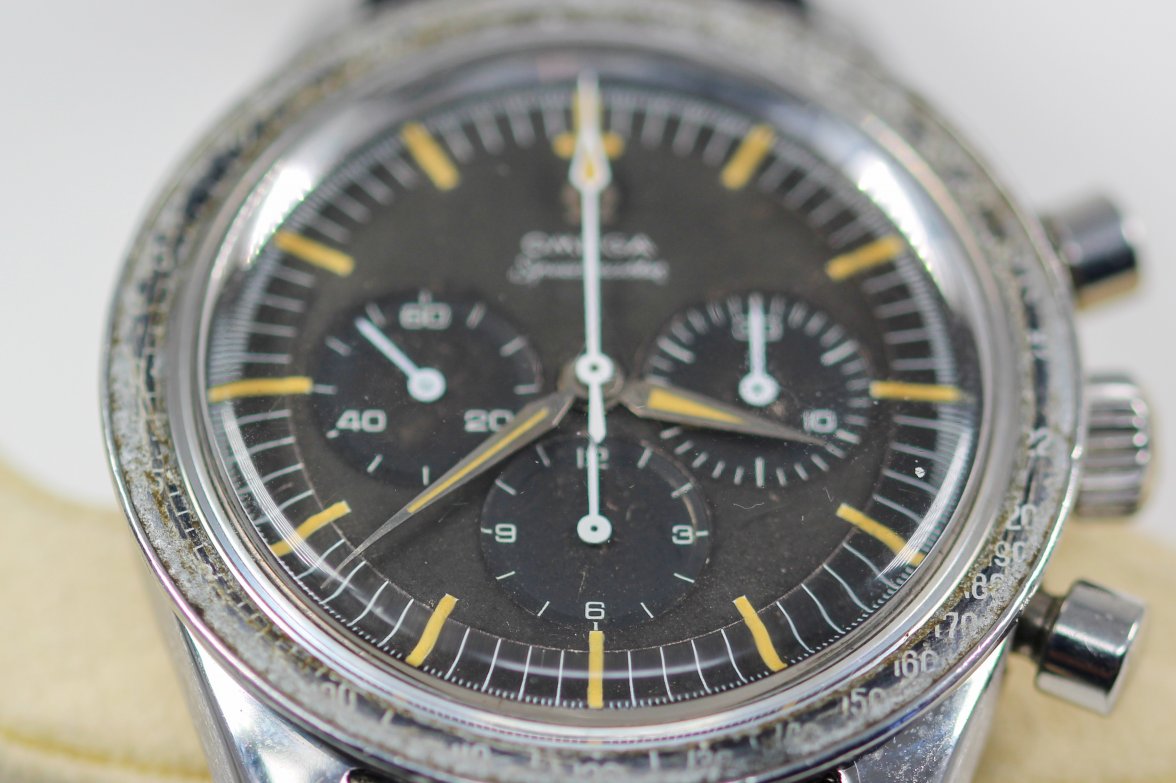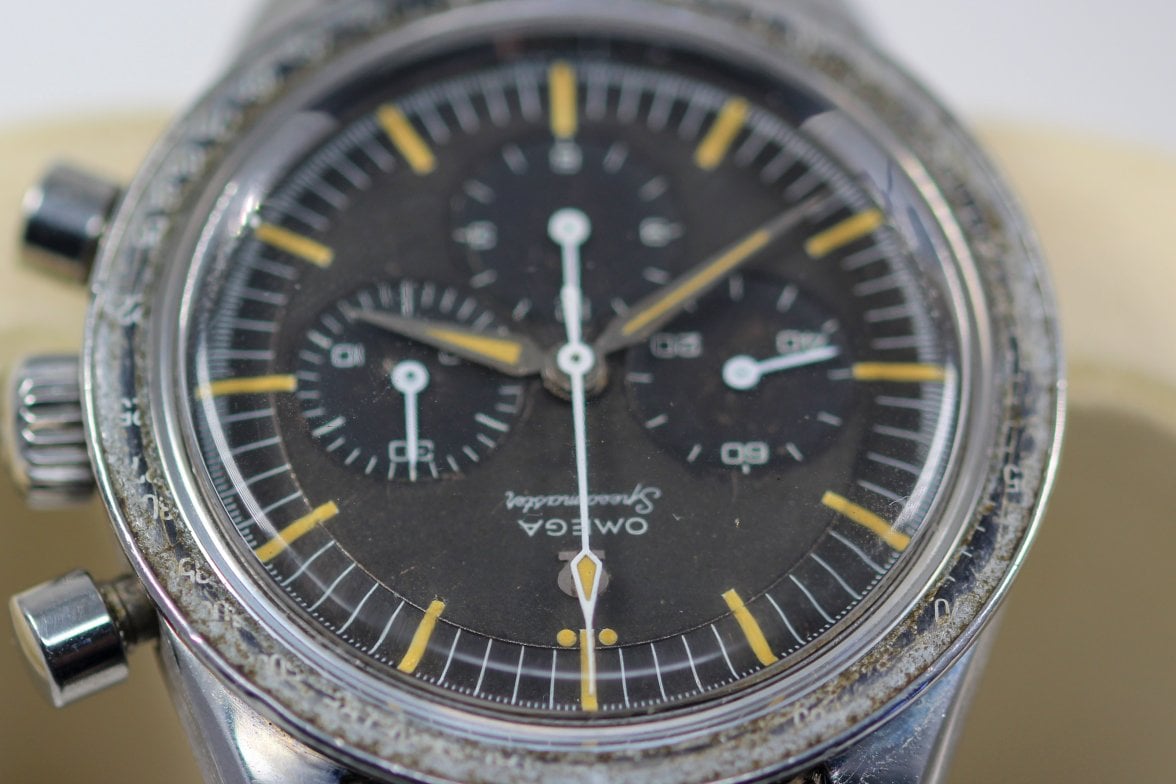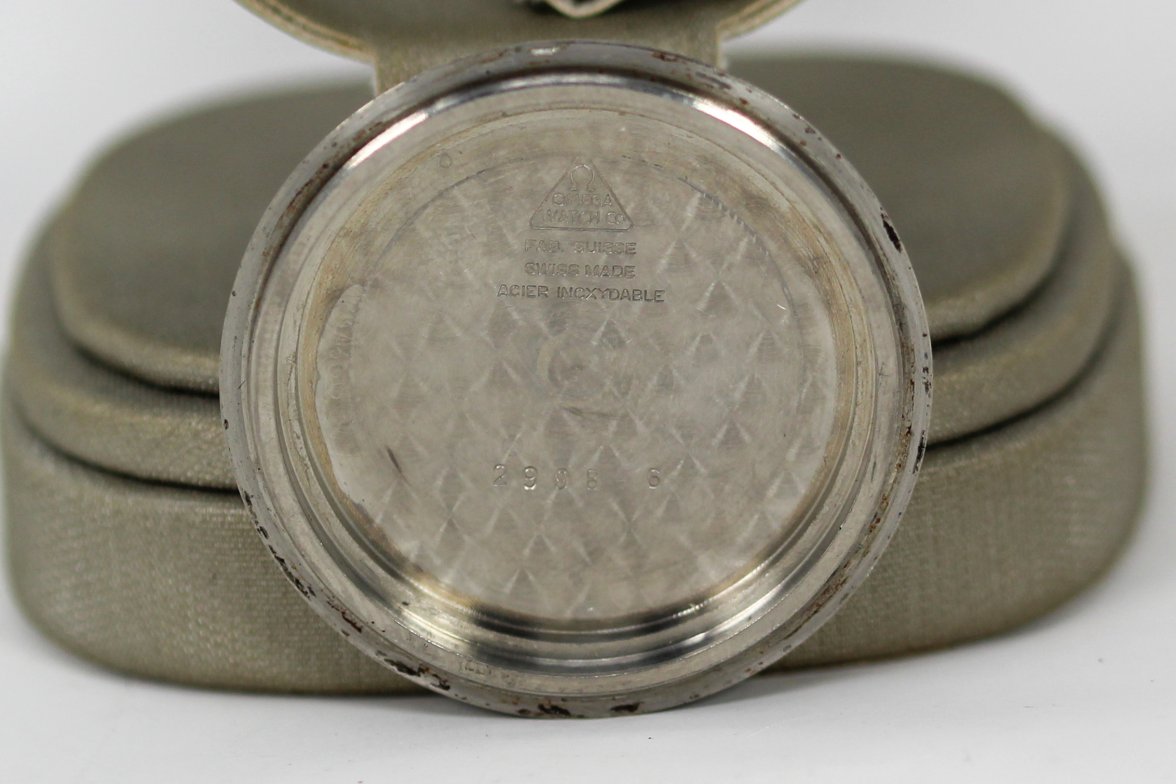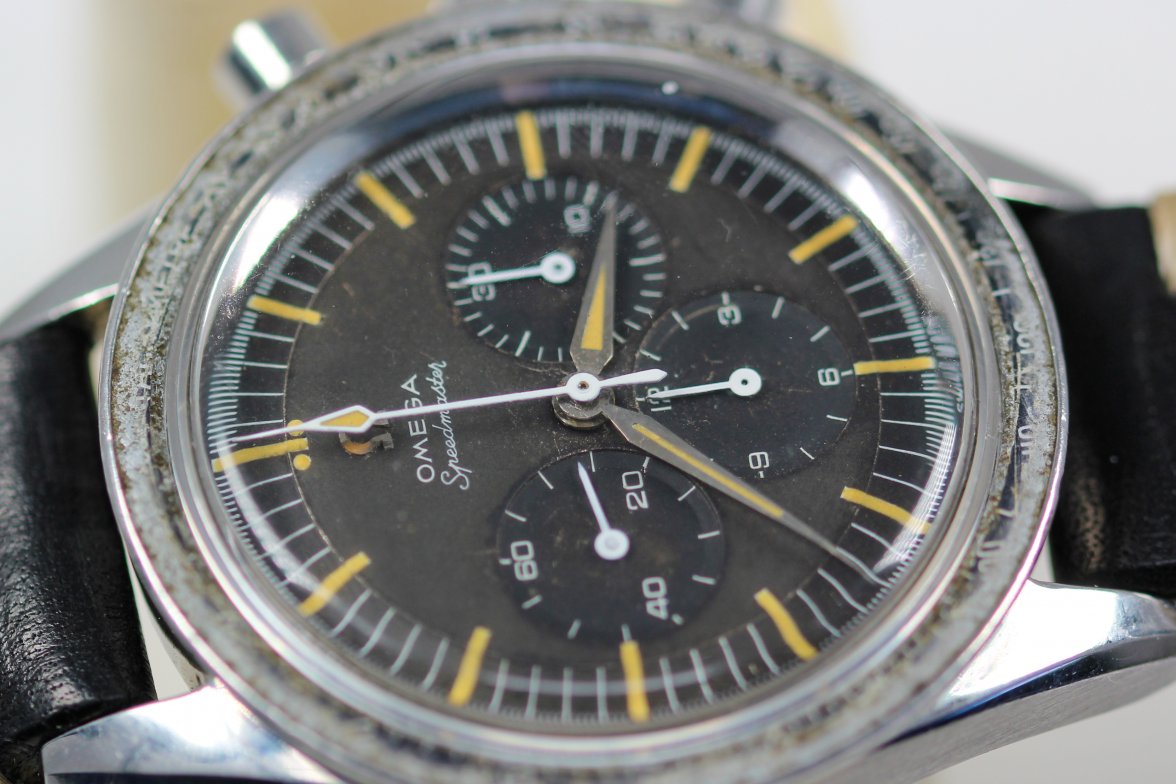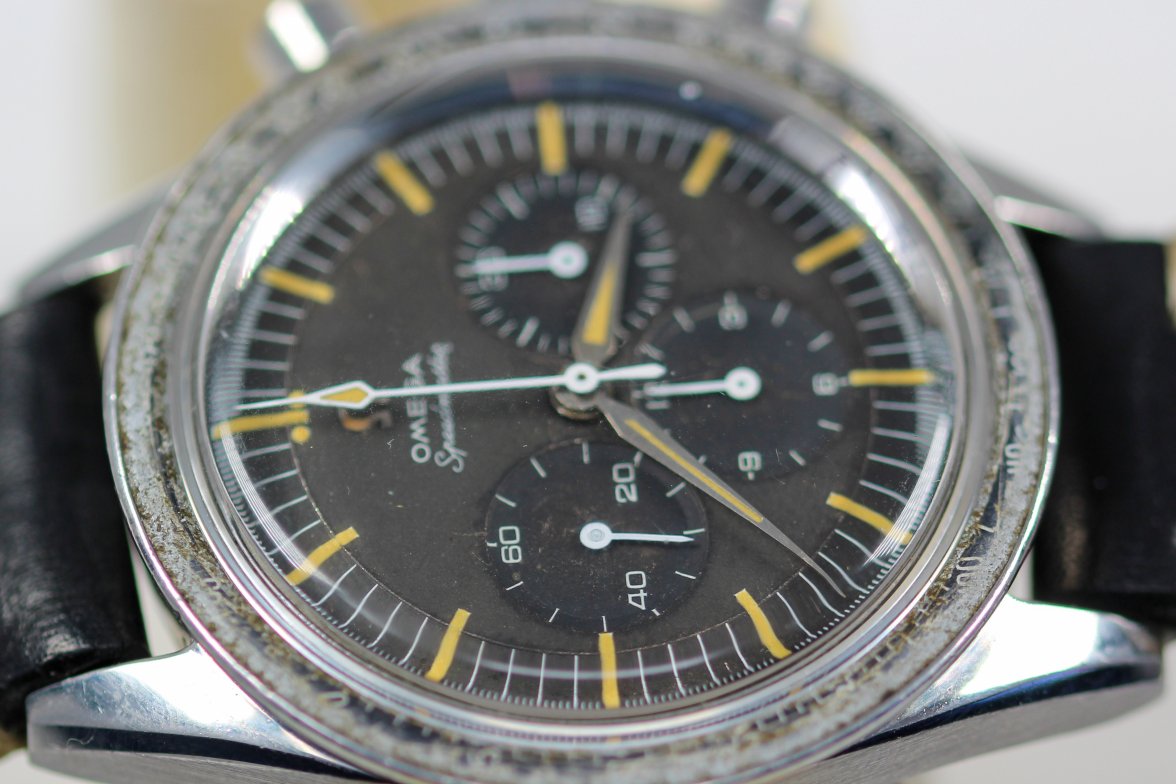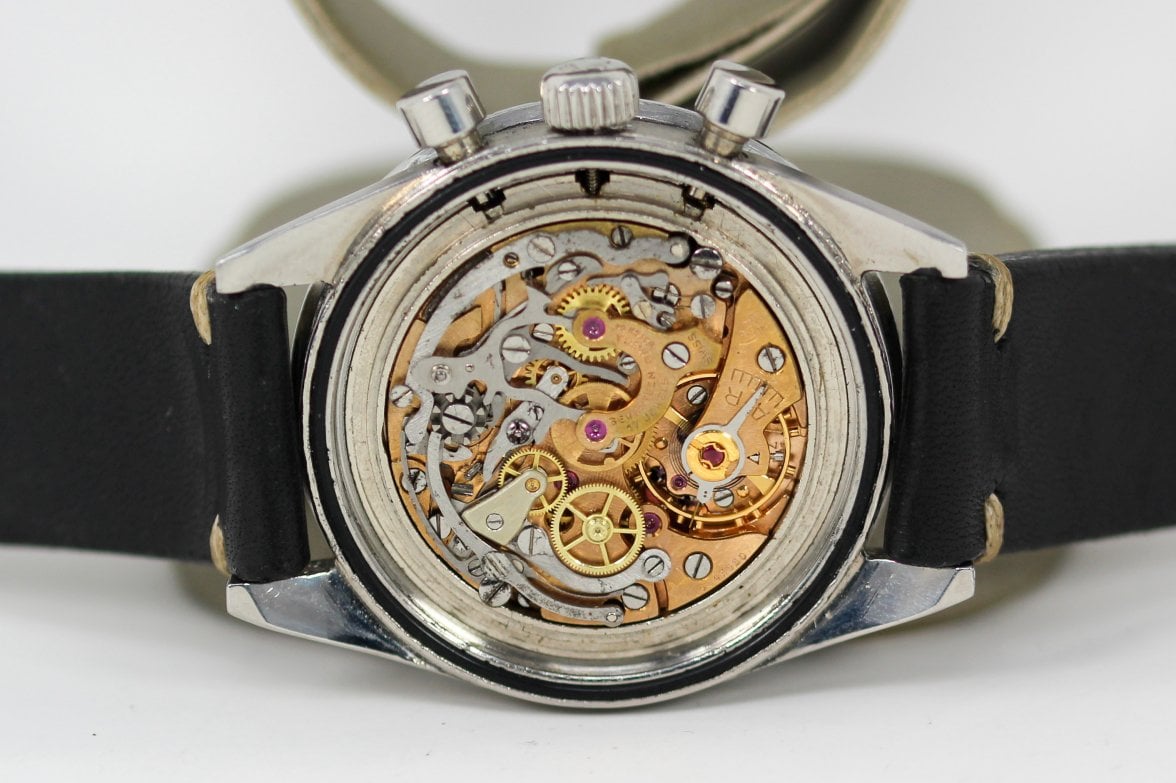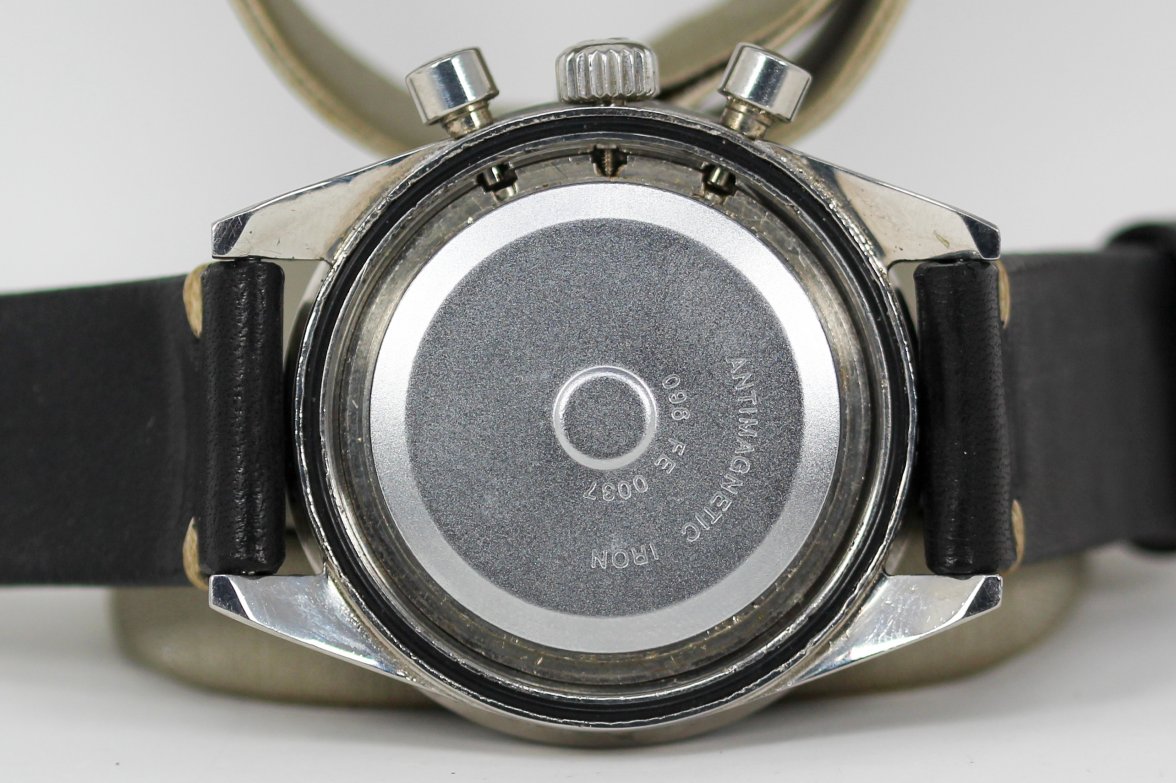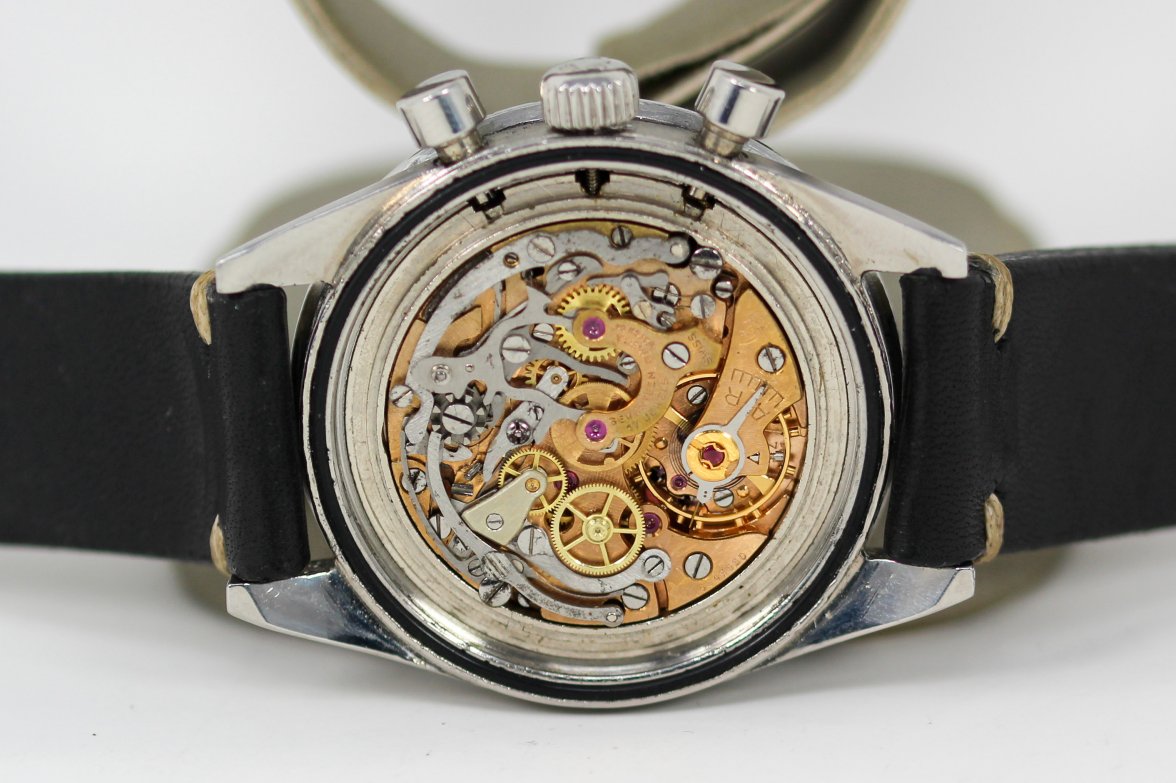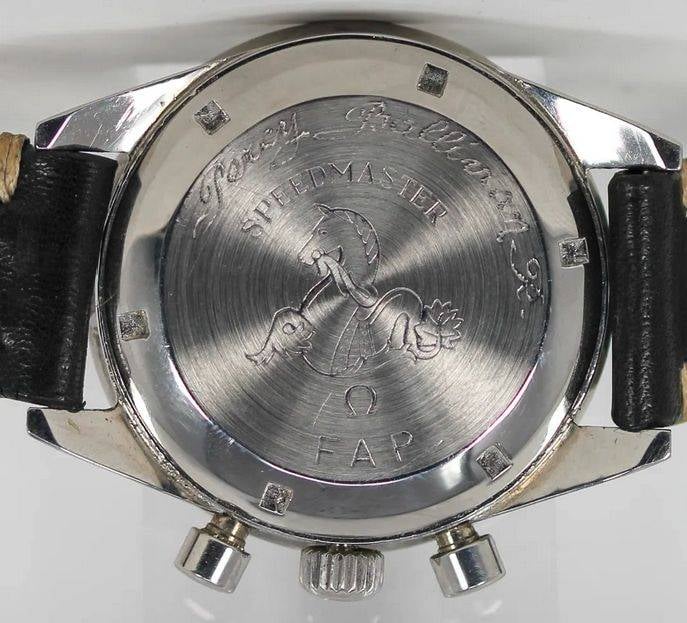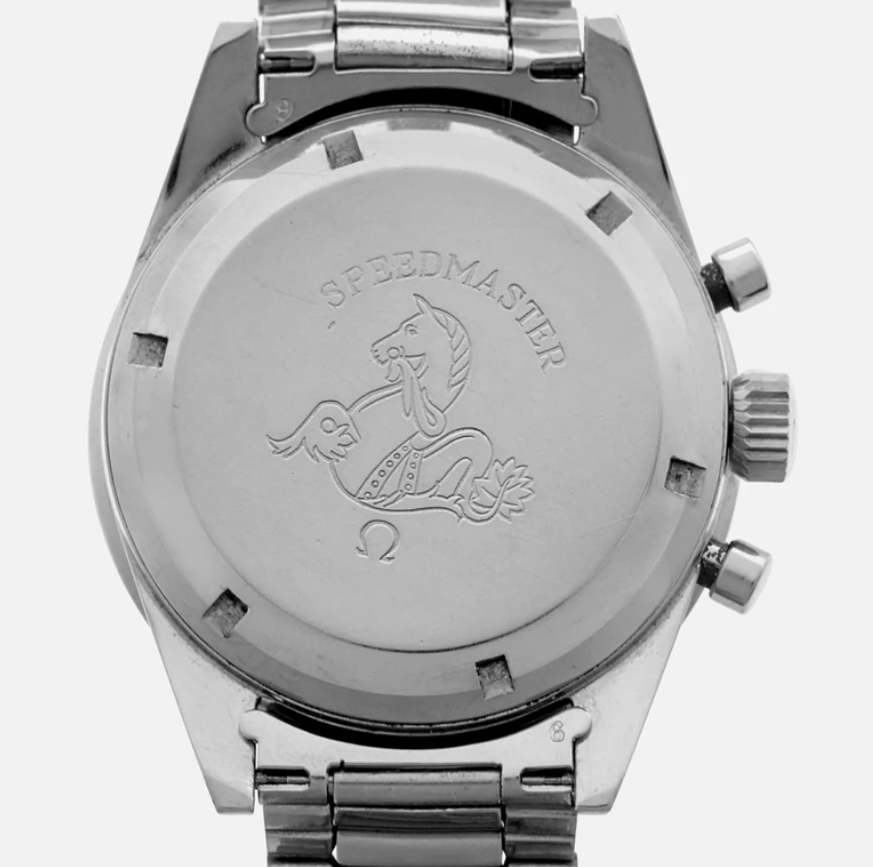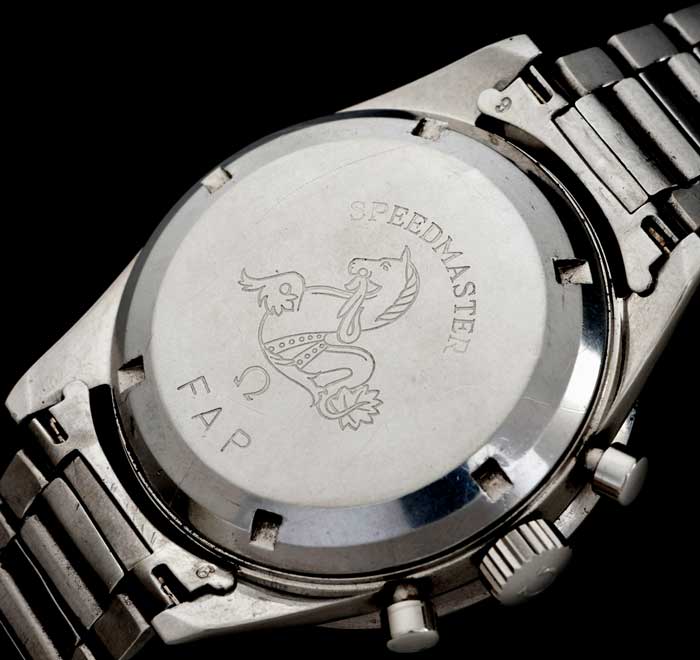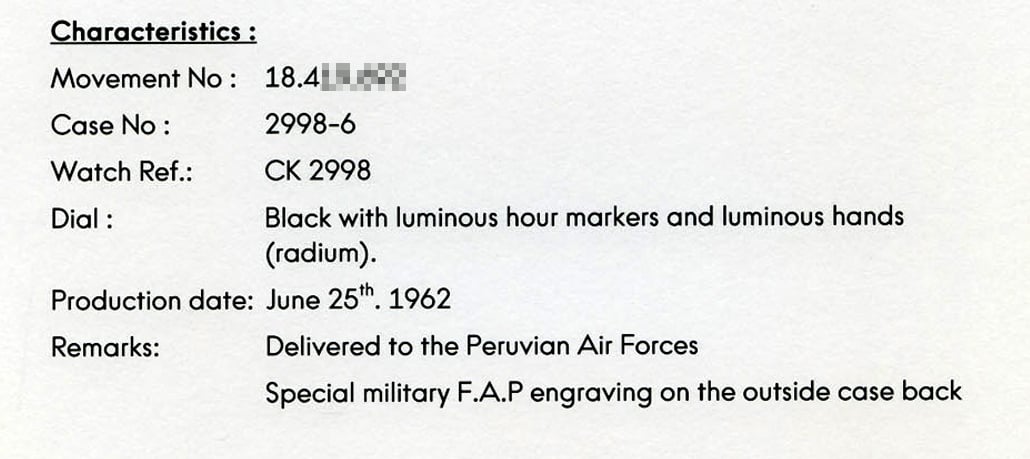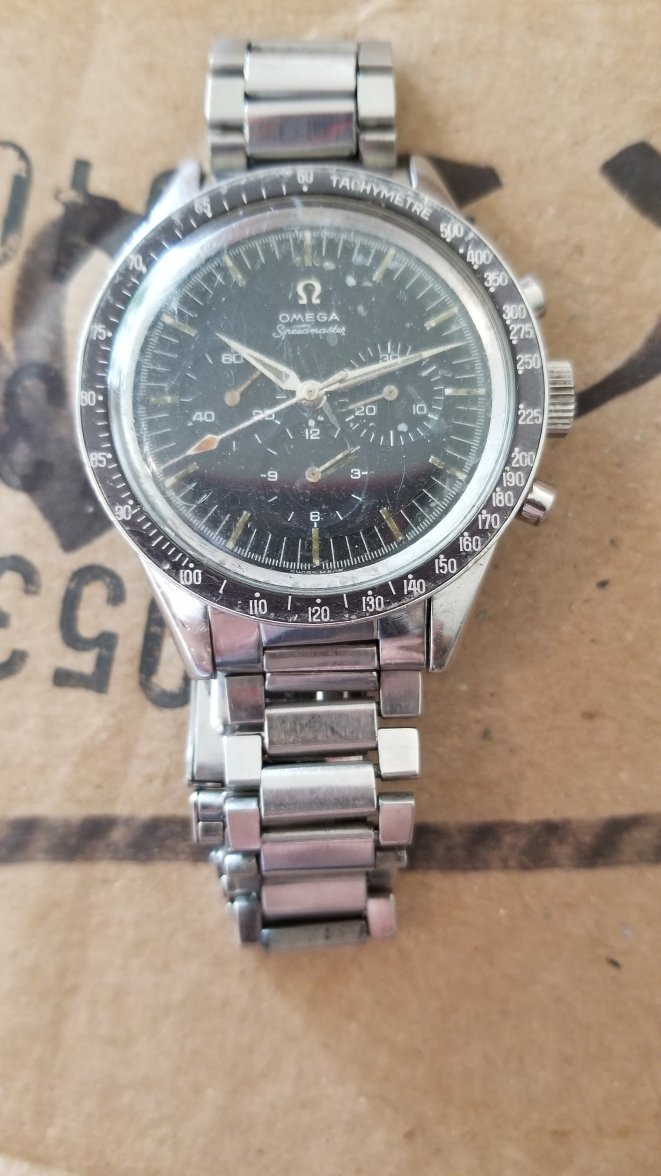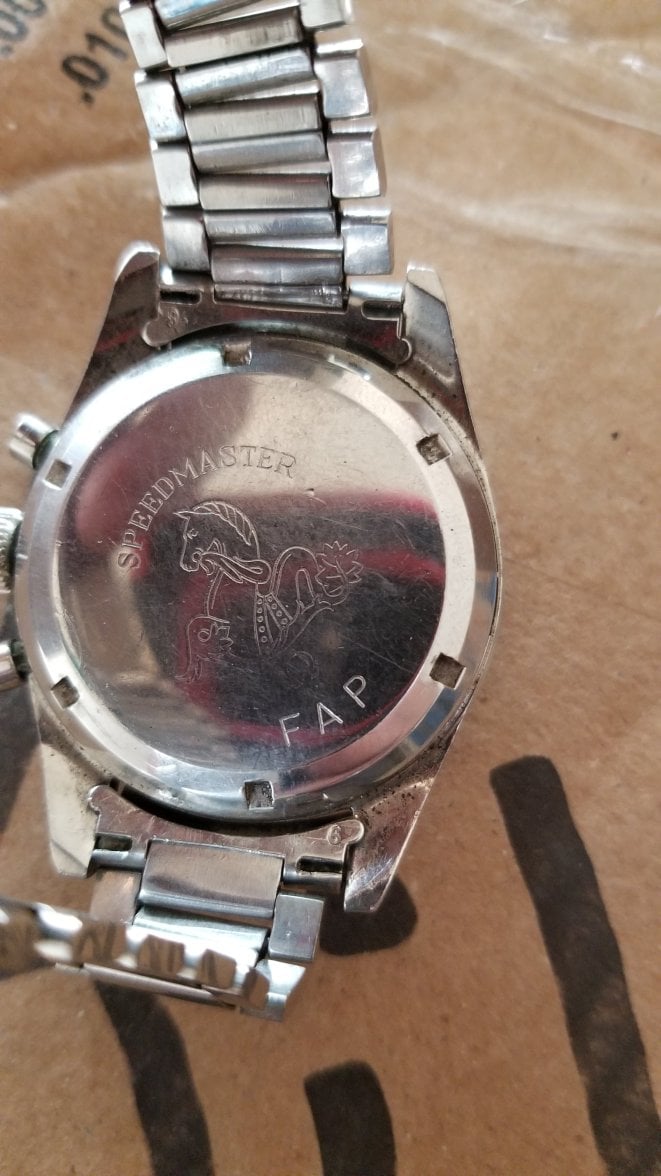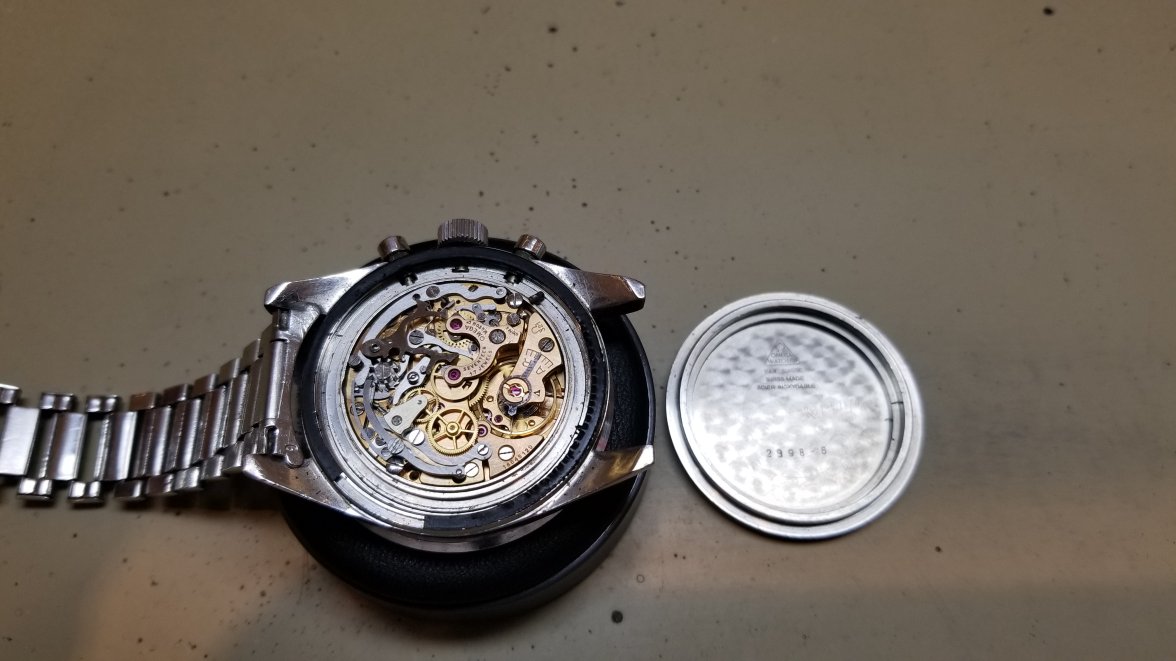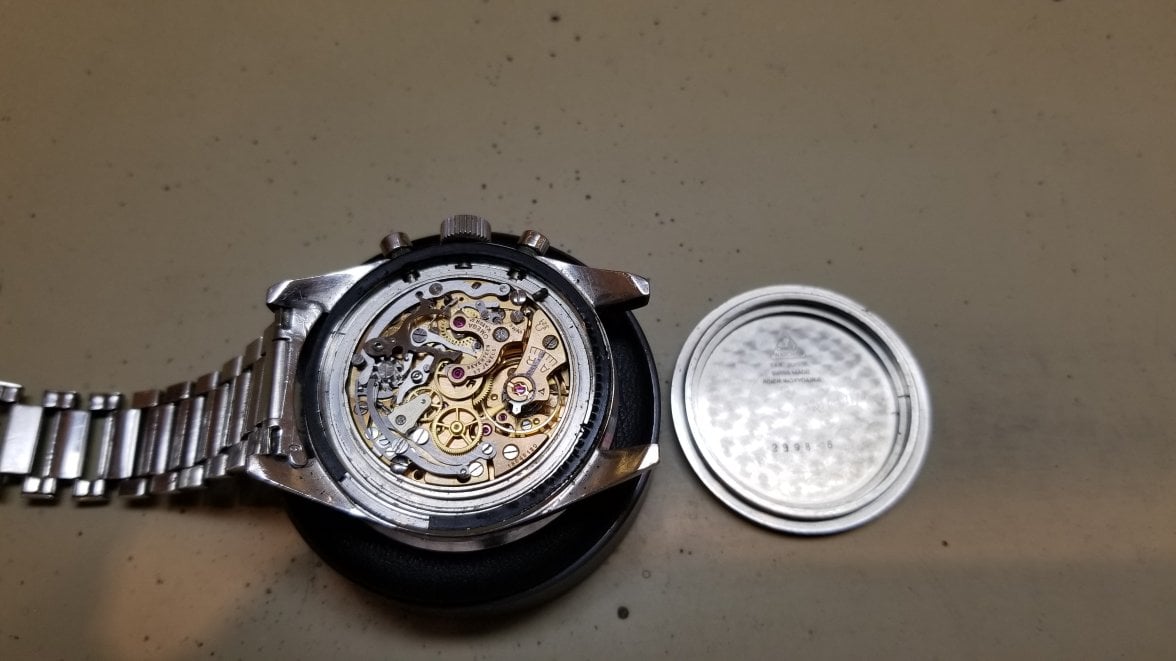First impression shows a straight lug case with wrong pushers and crown, and pumpkin lume with matching colour plots and hands.
This immediately indicates we are not looking at an original watch. The question is, how invasive are the changes?
Starting with the dial, the body colour is dry, slightly faded from black. The step shows loss of colour, abrasive damage perhaps. Look at the white “snow” on the step junction. There are other indications of damage : circular scarring on the hour sub dial, a scar under the hour hand possibly from a careless hand removal, and damage at the minute counter near the pinion. In fact all the sub dials show scuffing.
The print is complete.
The lume colour is not outside of known examples BUT, why is the lume so clean and defined, without damage, while the dial surface is so poor, and indeed decayed or damaged at the step?
At this point, one has to reckon if it is a re lume, then the value is the same as the awful state it would have been in to need the re lume. So not much.
I would not value this as a good dial. I think it is poor to fair. I might, on inspection, value it as an attractive dial but attractive does not equal valuable if it is in poor condition.
The bezel contributes no value to the total. In fact you have to take money off the chart’s value as it is effectively missing.
The case has been given a good working over. Before being too hard on this, almost all straight lugs have had something done to it. Though some are just worn. There wasn’t a lot of metal there to start with, and over the years most watchmakers tried to polish up the watch to make their customers happy. So i expect some kind of case work. I have to take a view on straight lug cases. Unpolished straight lug Speedmasters only seem to exist in Rolex dealers inventory (joke).
This watch has had side brushing re applied and perhaps re profiling, but not so as to put me off, depending on price.
The case back however is different thing. It has lost the definition on the bevels, shows lathe marks and engraving.
I am suspicious or the FAP marking as I would have expected it to be less prominent after all the back has been through. In any event, a FAP is only a FAP if the extract says so.
I don’t like the state of the case back at all.
From the rear we see corrosion on the case lip. I would say the case is fair to poor as a result of this on top of the other issues.
The hands look to be recent restorations. I think I can see transverse curve, I think the metal is old but for sure these are new lume. They match the dial plots in a way rarely seen in original. If they are old original hands then they make up a substantial percentage of the overall value, even thought they are re lumed. This really just underlines how little the whole watch is worth.
The chrono seconds hand is a new addition. Note the lume is perfectly matching the hands and plots. So it must have been added.
Pushers and crown are incorrect.
The movement is dirty, and incorrect clutch bridge for a 2998. I would be very suspicious of it. It’s probably an amalgamation of parts from more than one source. Even if it gets an extract, the parts are incorrect for the year.
The dust cover is modern, and perhaps the cause of the marks inside the caseback.
In my opinion this watch has some attraction, but little value as an original collectors example. The dial and hands have some value, but the rest is questionable.
This is the hardest thing to value.
On my chart a POOR watch is $8,000, but at this level we have to be very flexible - depending what parts are usable.
This is the kind of watch that if offered to me cold, I wouldn’t want to pay $6,000 for it. Then I imagine on eBay, someone who needs a dial might pay $8,000. Someone else might think it’s worth 10k.
Another scenario might be a dealer cobbled it together and sneaks it into a larger auction house and two buyers miss the clutch bridge and bid to 15k.
All in all a very interesting watch.
To learn I mean.

